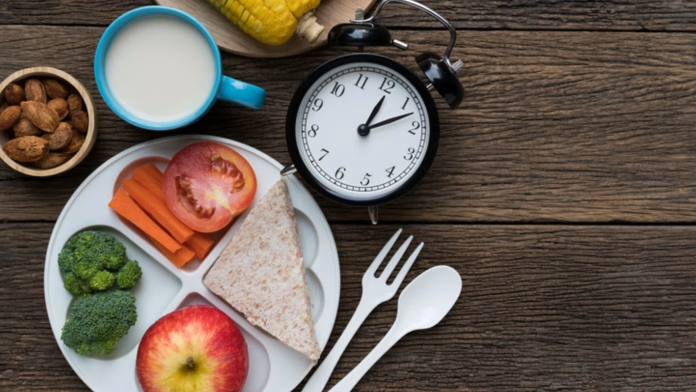In the pursuit of weight loss, individuals often encounter conflicting information and contradictory diet trends. Among the debates surrounding meal frequency, whether consuming two or six meals a day is more effective for weight loss has gained considerable attention. As nutrition experts delve into the subject, it becomes clear that the answer is not as straightforward as it may seem. Among the various arguments, whether consuming two or six meals a day is more effective for weight loss has captured the attention of nutrition experts and individuals seeking to shed unwanted pounds.
This article will explore the advantages and disadvantages of a six-meal diet and a two-meal diet and provide guidance on how often you should eat for optimal weight loss.
What Is a Six-Meal Diet?
A six-meal diet, as the name suggests, involves eating six smaller meals throughout the day. The goal is to space out meals every two to three hours, ensuring a constant supply of nutrients to the body. Proponents of this approach argue that frequent meals can increase metabolism, control hunger, stabilize blood sugar levels, and promote muscle growth. Advocates of the six-meal diet often emphasize the importance of portion control and nutrient timing to maximize the benefits.
What Is a Two-Meal Diet?
In contrast, a two-meal diet restricts individuals to consuming only two substantial meals per day. The timing of these meals may vary based on personal preference and lifestyle. Proponents of this approach believe that by eating two larger meals, individuals can achieve a caloric deficit and promote weight loss. Advocates argue that fewer meals simplify meal planning, improve satiety, and may lead to a more sustainable eating pattern.
Two Meals vs. Six Meals a Day: Advantages and Disadvantages:
Both the two-meal and six-meal diets come with their own set of advantages and disadvantages. Let’s explore each approach to gain a deeper understanding.
Advantages of a Six-Meal Diet:
- Enhanced metabolism: Eating frequent meals is thought to increase metabolism, potentially leading to greater calorie burn.
- Improved portion control: Smaller, more frequent meals can help control portion sizes and prevent overeating.
- Steady energy levels: Regularly fueling the body throughout the day can help maintain stable energy levels and reduce energy crashes.
- Better nutrient absorption: Smaller meals allow for optimal digestion and absorption of nutrients, ensuring efficient nutrient utilization.
Disadvantages of a Six-Meal Diet:
- Time and convenience: Planning and preparing six meals per day can be time-consuming, especially for individuals with busy schedules.
- Constant focus on food: The need to eat every few hours may lead to a preoccupation with food and potentially disrupt daily routines.
- Lack of flexibility: Strict adherence to a six-meal schedule may not be feasible or enjoyable for everyone, limiting social interactions and spontaneous meals.
- Risk of overeating: Despite the intention of portion control, frequent meals can still result in excessive calorie intake if not carefully monitored.
Advantages of a Two-Meal Diet:
- Simplified meal planning: Having only two meals to prepare can simplify meal planning, making it easier to adhere to a dietary regimen.
- Improved satiety: Larger, more satisfying meals may help individuals feel fuller for longer periods, reducing the temptation to snack or overeat.
- Potential for caloric deficit: By limiting meals to two larger portions, individuals may naturally consume fewer calories, aiding in weight loss.
- Freedom and flexibility: With fewer meals to focus on, individuals may have more flexibility in their daily schedules and social engagements.
Disadvantages of a Two-Meal Diet:
- Increased hunger between meals: Longer gaps between meals may result in increased hunger and cravings, potentially leading to overeating or poor food choices.
- Digestive challenges: Consuming larger meals in a shorter timeframe may pose challenges for digestion, causing discomfort or bloating in some individuals.
- Potential for overeating: While the intention is to consume larger portions, individuals must still exercise portion control to prevent excessive calorie intake.
- Individual variation: The two-meal approach may not be suitable or sustainable for everyone, as individual preferences and lifestyles vary.
How Often Should You Eat?
When it comes to determining how often you should eat for weight loss, there is no one-size-fits-all answer. The key lies in finding an approach that aligns with your goals, lifestyle, and individual needs. Some important factors to consider include:
- Personal preferences: Choose a meal frequency that suits your preferences and allows you to adhere to a healthy eating pattern.
- Energy balance: Regardless of meal frequency, achieving a caloric deficit is crucial for weight loss. Monitor your overall calorie intake and expenditure.
- Nutrient density: Focus on consuming nutrient-dense foods that provide essential vitamins, minerals, and macronutrients to support overall health.
- Satiety and hunger cues: Pay attention to your body’s hunger and satiety signals. Experiment with different meal frequencies to find what keeps you feeling satisfied and energized.
- Lifestyle and practicality: Consider your daily schedule, work commitments, social interactions, and personal routines when determining your meal frequency.
In the battle between two meals and six meals a day, there is no definitive winner. Both approaches have their merits and potential drawbacks. Ultimately, the most effective meal frequency for weight loss depends on individual factors such as personal preferences, lifestyle, and adherence. Listen to your body, consult with a registered dietitian or nutrition expert, and experiment with different meal frequencies to find what works best for you. Remember, sustainable weight loss is achieved through a holistic approach that encompasses balanced nutrition, regular physical activity, and a positive mindset.





